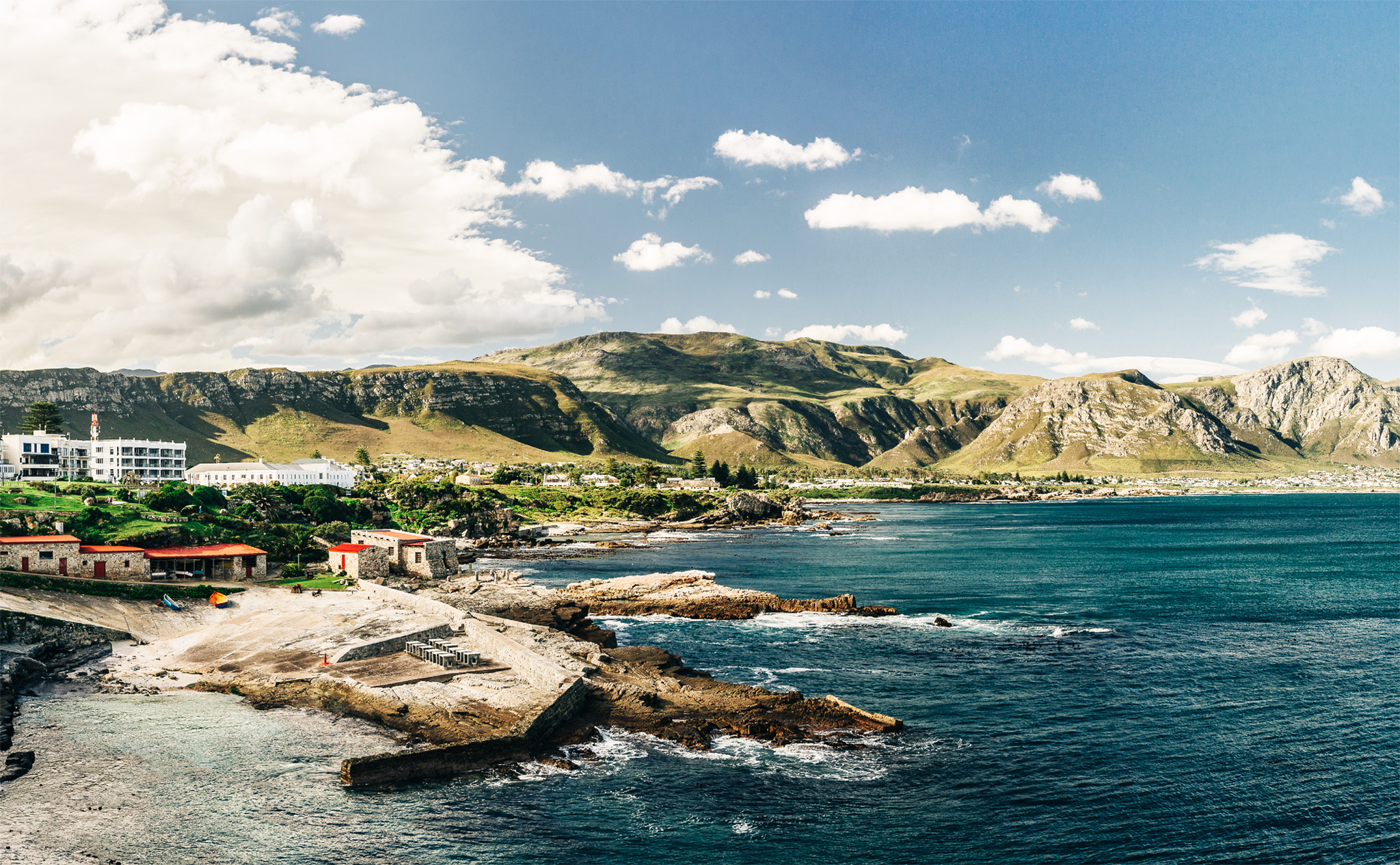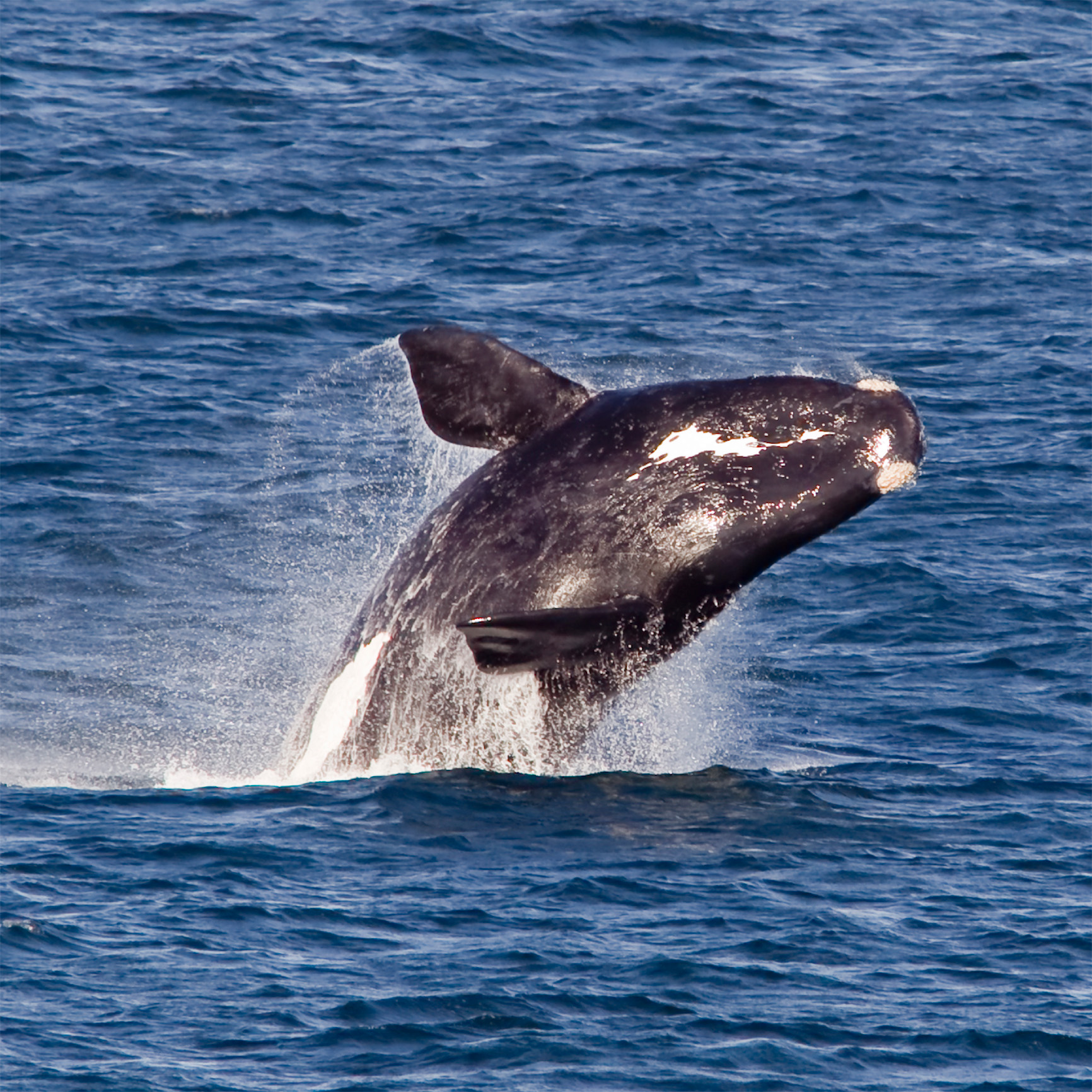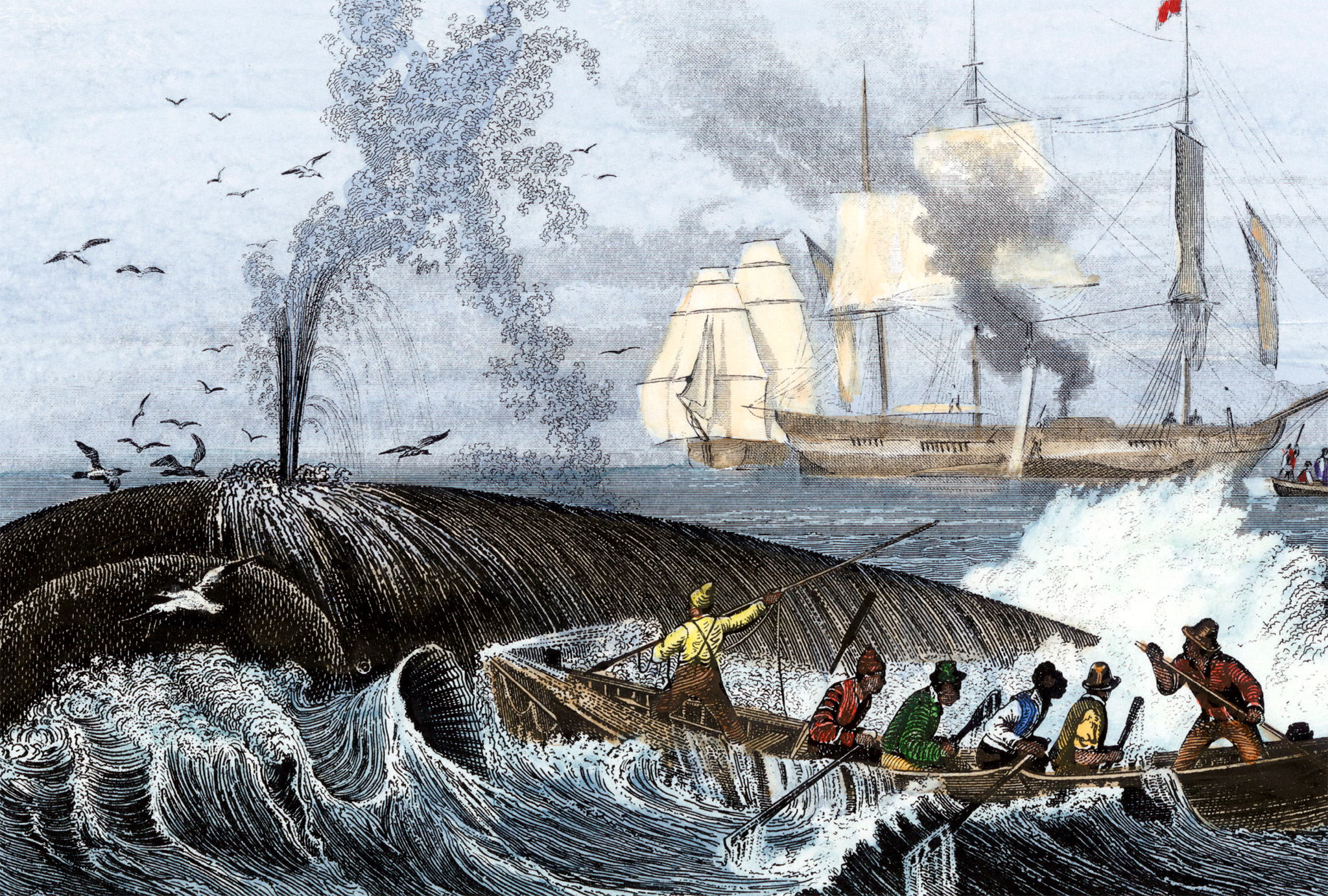First established as a farming community, this sunny, well-located town soon became a fashionable tourist destination. The grandeur of Hermanus is now a little faded, but it remains a popular holiday hub.

t The picturesque coastline of Hermanus
EXPERIENCE Hermanus and the Overberg

t known for its excellent whale-watching
Today, Hermanus is famous for its superb whale-watching sites. Every year, southern right whales migrate from the sub-Antarctic to calve in the shelter of Walker Bay. They arrive in June and leave again by December, with the peak whale-watching season during September and October. The town’s official whale crier blows his kelp horn as he walks along Main Street, bearing a signboard that shows the best daily sighting places.
Hermanus’s focal point is the Old Harbour Open-Air Museum, which traces the history of the town’s whaling days and contains a whale skull and old weapons. Fishermen’s boats dating from 1850 to the mid-1900s lie restored and hull-up. There are also bokkom stands, racks on which fish are hung to dry in the sun, and reconstructed fishing shacks.
Hermanus has a beautiful coastline. Unspoiled beaches such as the 12-km (7-mile) stretch of Die Plaat are perfect for walks and horse riding. A clifftop route extends from New Harbour to Grotto Beach – the regularly placed benches allow walkers to rest and to enjoy the superb views. Swimming is generally safe, and there is a tidal pool below the Marine Hotel.
Other activities nearby include the Rotay Way, a 10-km (6-mile) scenic drive, and the Hermanus Wine Route, which features four vineyards in the pretty Hemel en Arde Valley. Just east of Hermanus lies Stanford, a rustic crafts centre. The heart of this little village contains many historic homes built in the late 1800s and early 1900s, and has been proclaimed a national conservation area.

Insider Tip
Call of the Wild
The World Wide Fund for Nature (WWF) has recognized Hermanus as one of the earth’s best land-based whale-watching spots. The mammals can be seen as close as 10 m (33 ft) away, while the Old Harbour Museum’s sonar link-up transmits whale calls to an audio room on shore.
EXPERIENCE Hermanus and the Overberg
|
EAT Bientang’s Cave An award-winning seafood restaurant, dramatically carved into a cave that extends to the water’s edge. ⌂ Marine Dr, Hermanus ∑ bientangscave.com Seafood at The Marine Head here for ocean-fresh seafood, listed on a menu that expertly blends local and international flavours. ⌂ Marine Dr, Hermanus ∑ collectionmcgrath.com |
EXPERIENCE Hermanus and the Overberg
Whale-Watching

t Enjoying a close-up sighting during a whale-watching trip
Some 37 whale and dolphin species and around 100 different types of shark occur in southern African waters. A large proportion of the world’s 4,000–6,000 southern right whales migrate here annually, leaving their subantarctic feeding grounds from June onwards to mate and calve in the warmer waters of the protected rocky bays and inlets that occur along the South African coastline.
The Southern Right Whale

t A characteristic V-shaped “blow”, seen when the southern right whale exhales
Early whalers named this species “southern right” (Eubalaena australis) because it occurred south of the Equator and was the perfect species to hunt. Its blubber was rich in oil, the baleen plates (filter-feeders made of keratin) supplied whalebone for corsets, shoe horns and brushes, and when dead the whale floated, unlike other types of whale, which sank. A protected species, it can migrate up to 2,600 km (1,615 miles) annually.
Whale behaviour

t A breaching humpback whale, with the extremely long flippers that are a striking feature of this species
Certain types of behaviour are common among whales, such as breaching, where the whale lifts its upper body out of the water and falls back into the sea with a massive splash. Humpbacks in particular are well-known for their spectacular breaching, lifting themselves well above the ocean. Other antics you might see on a whale-watching trip include lobtailing, where the flukes (the two lobes of the tail) slap on the surface to produce a loud clap, and spyhopping, where the whale lifts its head vertically from the sea to observe what is happening on the surface.
EXPERIENCE Hermanus and the Overberg
Whale Exploitation

In the years from 1785 to around 1805, some 12,000 southern right whales were killed off the southern African coast, but the northern right whale was even more ruthlessly hunted and is virtually extinct today. After the introduction of cannon-fired harpoons in the late 19th century, humpbacks became the first large whale to be exploited; around 25,000 were killed between 1908 and 1925. By 1935, when the League of Nations’ Convention for the Regulation of Whaling came into effect, fewer than 200 southern right whales remained in southern African waters. Although numbers are increasing steadily – by around seven per cent every year – today’s total population is only a fraction of what it once was.
EXPERIENCE Hermanus and the Overberg

locations for whale-spotting
Hermanus
The whale-watching capital of South Africa, Hermanus is renowned for its spectacular sightings.
False Bay
The Cape Peninsula has numerous whale-watching sites around False Bay, from both land and boat.
Addo Elephant National Park
In addition to the Big Five, this national park is also home to seasonal populations of southern right whale in its Marine Sector.
